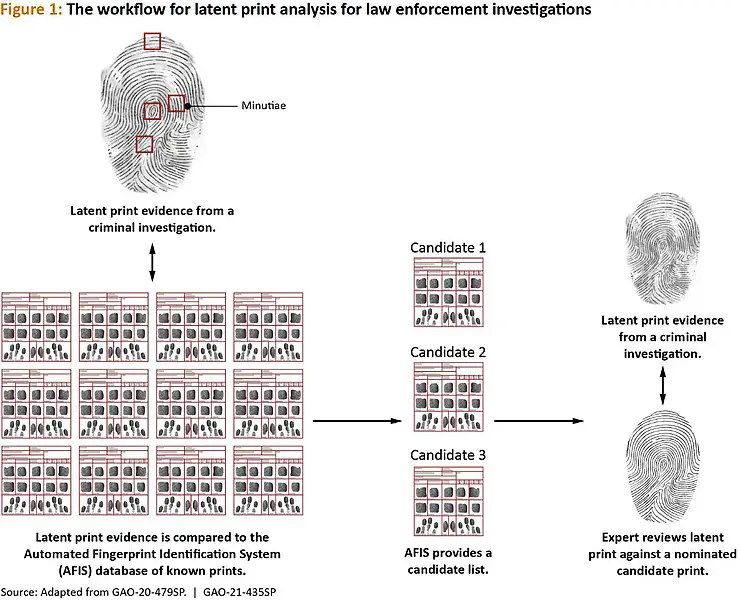5 Uses of Data Mining Explained
Uses of data mining are; sales forecasting, criminal investigation, business decision-making, cyber security/anti-fraud systems management, and environmental impact assessment.
This article discusses the uses of data mining, as follows;
1). Sales Forecasting (as one of the Uses of Data Mining)
Data mining can be used for forecasting, where large amounts of historical data are available.
Specifically, predictive techniques of data mining like regression, can help extract information from large datasets, with which future outcomes can be predicted.
Data mining helps firms to forecast their future sales, by identifying regular, repeating patterns from historical sales data, by a series of analytical steps that include data cumulation, processing and information-representation [3].
Through these steps in the data mining process, raw sales data can be transformed to readable information that can be used to predict and plan for future sales.
Data mining techniques for sales forecasting include predictive techniques like correlation and regression, and some descriptive techniques like association and clustering.
There are multiple reasons why the use of data mining to forecast sales is a valuable practice. One of these is the possibility of using extracted knowledge to predict both internal and external price fluctuations in a given market [4]. The extracted knowledge can also be used to monitor customer preferences and improve service delivery [10].
2). Criminal Investigation
Data analysis in criminal investigation involves sorting through heterogeneous sets of data to find trends and anomalies that can be used to gain knowledge about the conditions and events surrounding a crime.
Data mining aids investigations in all fields and projects that rely on large amounts of data, including academic, socioeconomic and legal research.
Crime prediction and analysis can be achieved efficiently with data mining because of the possibility of using algorithms to identify all major characteristics of criminal cases [6].
Functions performed by data mining algorithms in criminal investigation include anomaly detection and analysis-automation.
Asides investigation of crimes that have already occurred, data mining can be used in crime prevention and control [5]. This is possible through measures like the recognition of crime patterns from historical data, and the identification of crime-prone areas, as well as criminal entities and possible targets [7].

3). Business Decision Making (as one of the Uses of Data Mining)
Uses of data mining in business range from market analysis, anti-fraud, data security, and customer service optimization, to decision-making.
Data mining is used in decision making by the algorithmic identification of data trends and outliers, and the prediction of future outcomes, all of which provide highly-valuable information to increase the reliability and accuracy of decisions.
Business decisions can be helped immensely by using data mining tools to analyze large amounts of corporate data to produce coherent information that provides clear guidance on the available options, opportunities, risks, threats and areas for improvement.
Data mining can be used to help businesses stat afloat in their industries, by revealing the strategies, methods, strengths, weaknesses and general behaviors of competitors [1].
4). Cyber Security and Anti-Fraud Systems Management
Data mining can be used to optimize the security of virtual systems like software and databases.
This is done by revealing unusual trends in the interaction of users with such systems, which may be indicative of suspicious, fraudulent activity [9].
Cybersecurity management through data mining can take the form of pattern prediction, where knowledge extracted from historical data is used to predict and prevent future cyber attacks.
It is also possible to use data mining techniques to optimize the functionality of security software, by identifying sensitive areas for improvement and modification of such algorithms.
5). Environmental Impact Assessment (as one of the Uses of Data Mining)
Data mining can be used for the analysis of environmental systems, in order to observe the effects of distinctive variables on soil, water and air quality.
In order for environmental impacts to be assessed using data mining techniques, Internet of Things (IoT) networks are usually needed; which comprise of smart devices like soil sensors that are seamlessly integrated, and serve as sources of raw data.
These raw datasets can then be analyzed, processed and transformed into implicit knowledge for decision-making [8].
Impact assessment by data mining can optimize the overall process of environmental management, by linking land-use patterns to environmental conditions like pollution, and providing clues as to how such conditions and land-use patterns can be improved effectively.
Data mining can be used to develop a life cycle assessment model or framework based on historical data on human activities or other processes that affect the environment, in a bid to make decisions for environmental remediation or protection [2].
Lastly, data mining can help to predict future environmental events and conditions, which is very helpful with regards to the prevention or impact-mitigation of hazards.

Conclusion
Uses of data mining are;
1. Sales Forecasting
2. Criminal Investigation
3. Business Decision Making
4. Cyber Security and Anti-Fraud Systems Management
5. Environmental Impact Assessment
References
1). Doğan, O.; Aşan, H.; Ayç, E. (2015). "Use Of Data Mining Techniques In Advance Decision Making Processes In A Local Firm." European Journal of Business and Economics, Central Bohemia University, vol. 10(2), pages 6821:10-682. Available at: https://doi.org/10.12955/ejbe.v10i2.682. (Accessed 22 March 2023).
2). Froemelt, A.; Dürrenmatt, D. J.; Hellweg, S. (2018). "Using Data Mining To Assess Environmental Impacts of Household Consumption Behaviors." Environmental Science and Technology 52(15). Available at: https://doi.org/10.1021/acs.est.8b01452. (Accessed 22 March 2023).
3). Gan, Z. (2022). "Research on Sales Forecasting Method Based on Data Mining." In: Atiquzzaman, M., Yen, N., Xu, Z. (eds) 2021 International Conference on Big Data Analytics for Cyber-Physical System in Smart City. BDCPS 2021. Lecture Notes on Data Engineering and Communications Technologies, vol 102. Springer, Singapore. Available at: https://doi.org/10.1007/978-981-16-7466-2_74. (Accessed 22 March 2023).
4). Guler, E.; Ersoz, T.; Ersoz, F. (2014). "Applying Data Mining Technique to Sales Forecast." IFORS - ICORD 2014, Barcelona. Available at: https://www.researchgate.net/publication/315834484_Applying_Data_Mining_Technique_to_Sales_Forecast. (Accessed 22 March 2023).
5). Jabeen, N.; Agarwal, P. (2021). "Data Mining in Crime Analysis" Proceedings of Second International Conference on Smart Energy and Communication (pp.97-103). Available at: https://doi.org/10.1007/978-981-15-6707-0_10. (Accessed 22 March 2023).
6). Keyvanpour, M. R.; Javideh, M.; Ebrahimi, M. (2011). "Detecting and investigating crime by means of data mining: A general crime matching framework." Procedia Computer Science 3(1):872-880. Available at: https://doi.org/10.1016/j.procs.2010.12.143. (Accessed 22 March 2023).
7). Sathyadevan, S.; Devan, M. S.; Gangadharan, S. S. (2014). "Crime analysis and prediction using data mining." 2014 First International Conference on Networks & Soft Computing (ICNSC2014), Guntur, India, 2014, pp. 406-412. Available at: https://doi.org/10.1109/CNSC.2014.6906719. (Accessed 22 March 2023).
8). Thuraisingham, B. (2003). "Data mining and cyber security." Third International Conference on Quality Software, 2003. Proceedings., Dallas, TX, USA, 2003, pp. 2-, Available at: https://doi.org/10.1109/QSIC.2003.1319078. (Accessed 22 March 2023).
9). Tüysüzoğlu, G.; Birant, D.; Pala, A. (2018). "Ensemble Methods in Environmental Data Mining." Data Mining. Available at: https://doi.org/10.5772/intechopen.74393. (Accessed 22 March 2023).
10). Zhang, M.; Wang, Y.; Wu, Z. (2021). "Data Mining Algorithm for Demand Forecast Analysis on Flash Sales Platform." Complexity, Hindawi, vol. 2021, pages 1-12, January. Available at: https://doi.org/10.1155/2021/6648009. (Accessed 22 March 2023).

